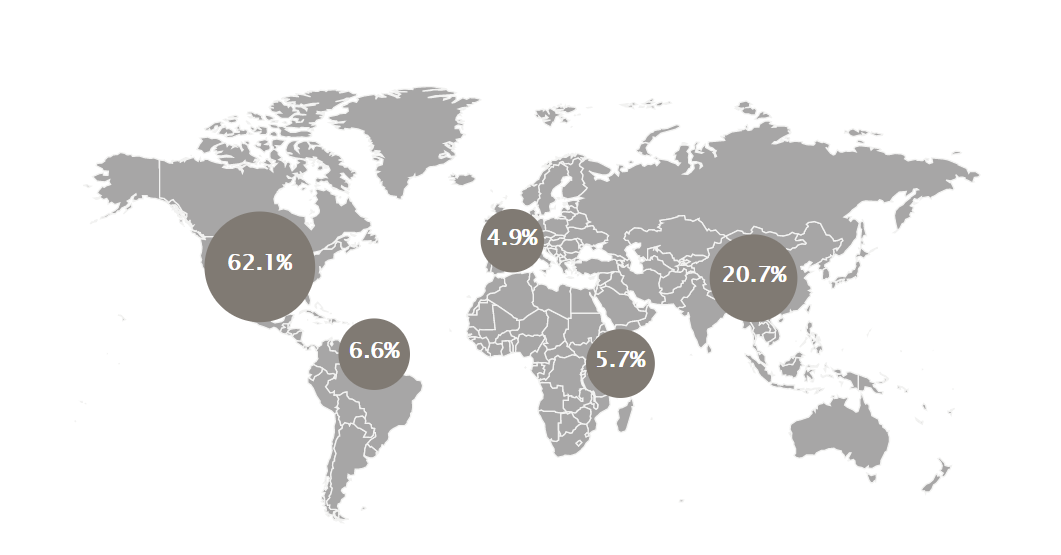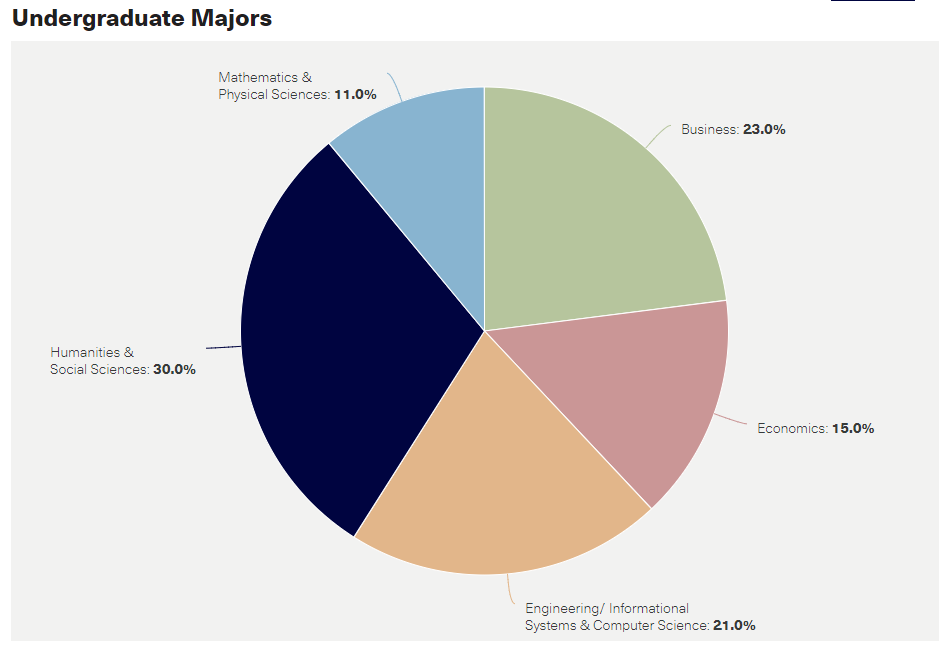Bruce Delmonico, assistant dean for admissions, recently shared a great blog post about the incoming Yale School of Management (SOM) Class of 2019 that served up many more juicy details than the average class profile.
Calling the group “one of the strongest we have welcomed to Yale,” Delmonico noted that they speak roughly 50 different languages, from American Sign Language and Arabic to Yoruba and many in between. In fact, 70 percent of the class speaks at least two languages, and more than a quarter (27 percent) speaks at least three.
This is perhaps not surprising, given that 45 percent of the class holds non-U.S. passports, and 48 countries are represented overall. Last year, 46 percent of the class was international, drawn from 46 countries. The ever-so-slight decrease in non-U.S. passport holders is not significant and does not reflect decreased interest among international applicants, Delmonico shared with us in an interview earlier this summer. Although domestic application volume did see a slightly higher uptick than international volume, both saw increases, he said. Concerns over potential shifts in immigration and visa policy did not chill interest among overseas applicants to Yale SOM.

The majority of the class (62.1 percent) comes from North America, followed by Asia Pacific (20.7 percent), the Caribbean, Central, and South America (6.6 percent), Africa and the Middle East (5.7 percent), and Europe (4.7 percent).
Application Volume Up, Class Size Grows by 14 Students
Class size inched upward this year to 348, from 334 students in last year’s class. But with oodles of applicants—nearly 4,100, representing a more than 12 percent increase over last year—that modest growth certainly didn’t come at the expense of selectivity. Yale’s been hot for the past few years, in fact. This year’s increase comes on top of a 6 percent increase last year and an astounding 25 percent increase the year before.
Women make up 43 percent of the class—on par with last year, which was the highest in 20 years. So far, that puts Yale SOM out in front of every other leading business school in this regard with the exception of Wharton, which boasts 44 percent women. U.S. students of color make up 27 percent of the class, and underrepresented U.S. students of color make up 12 percent, each figure down a percentage point from last year’s incoming class.
Average GMAT Score Inches Upward
The median GMAT score this year is 730—holding steady from last year, which was a 10 percent jump over the year before. Average GMAT is also continuing to climb, coming in at 727, up from 725 last year and 722 the year before. Eighty percent of this year’s incoming class had scores somewhere between 690 and 760. Average GPA is 3.67, up a smidge from last year’s 3.65. In terms of undergraduate majors, students who studied business and economics make up 38 percent of the class, followed by 32 percent of students who hold degrees in engineering, computer science, mathematics, or physical sciences. The remaining 30 percent of the class were humanities or social science majors. Although, as Delmonico pointed out in his blog post, some defy such clear categorization, such as one incoming student who double-majored in neuroscience and saxophone performance.
Yale SOM’s published class profile doesn’t include detail about the industries students worked in before pursuing their MBA, but Delmonico’s blog post sheds some light on the subject. “Their professional credentials are equally diverse and impressive, covering all sectors and a range of industries, including large financial institutions such as Bank of America, Morgan Stanley, and Goldman Sachs; major consulting firms like McKinsey, BCG, and Deloitte; and a host of other employers such as Cummins, Google, Dropbox, Schlumberger, the Peace Corps, World Bank, Unilever, and many others,” he writes. “The class includes a Colombian tax lawyer, a Saudi hedge fund manager, professionals from public finance to the Public Theater, architects, patent holders, doctors, lawyers, an Israeli tank commander, a naval aviator, and an Army Ranger.”
Of course, there are also many other things about the 348 incoming students not captured in the traditional “by the numbers” breakdown that give clues to what some of these candidates must have shared in their application essays to make themselves stand out. From the silver medalist in the world’s fastest drummer contest to the self-professed failed a cappella singer, from the Thai table tennis 3rd-place national trophy-holder to the captain of the 16th-ranked U.S. ultimate Frisbee team, from the 8th-place finisher in the National Spelling Bee to the top-ranked programmer in the Chinese National Olympiad—their claims to fame suggest class discussions will draw in any number of interesting perspectives.
For more on the many faces of Yale SOM’s Class of 2019, check out Delmonico’s full post.






